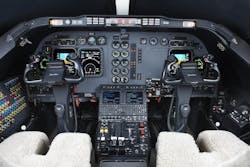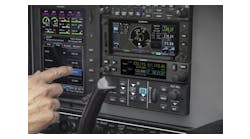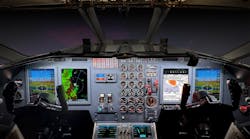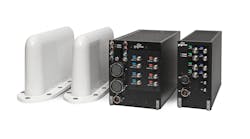Imagine your airplane without electronics. It’s almost impossible to do.
In theory, a well-maintained airplane will fly for many years. However, if the parts needed to keep an airplane going are no longer being produced, a replacement to newer technology will be required if available.
Many airplane operators don’t realize that parts obsolescence can be inevitable, especially in aviation. The longer the aircraft has been in circulation, the harder it can be to find parts. As new technology is introduced into the market, old technology becomes obsolete.
Electronics play a highly important role in aviation. They play such a large role that the word “avionics” was coined to refer to electronics in aviation. A simple way to think of avionics is the art of equipping an aircraft with electronic equipment.
The components that make up the avionics found in the cockpit weren’t originally designed for aviation; they were actually made for the average consumer. Avionics companies used technology developed for consumer electronics to build an electronic flight instrument system (EFIS) to replace electromechanical displays.
However, unlike consumer electronics, airplanes are built to operate for decades. On average, consumer electronics have a life cycle of just a few years before something new comes out.
Consumer electronics have progressed rapidly, especially in the past 10 years. Due to continually ongoing changes in consumer electronics, avionics are highly susceptible to obsolescence.
This holds true for aircraft like the Beechcraft King Air. The King Air was first introduced in the 1960s and continues to be assembled to this day using the same airfoil. Many later model King Airs are still in circulation around the world. However, countless owners and operators are beginning to feel the effects of parts obsolescence.
The growing pains of parts obsolescence are not isolated to just King Air owners. It affects a large range of airframes, specifically airplanes built anytime between 1980 to the early 2000s. Many of these airframes are vulnerable to expensive upgrades or potential grounding due to parts obsolescence in the near future.
CRTs Popularity Diminished
One example of parts obsolescence that is currently affecting many operators is the cathode ray tube, or CRT. These are most commonly found in turbine-powered airframes produced from the 1980s through the mid 2000s.
Again, many components that make up the avionics found in the cockpit were originally produced for consumer electronics. The color CRT is no exception. The CRT, originally developed for color television sets, was eventually applied to the cockpit as a first-generation EFIS component.
The simplified version of how the CRT works is that it uses high voltages to excite the screen phosphors within the tube, which in turn, creates the picture. While the first commercial color CRT was produced in 1954, CRTs were introduced into airplanes around the 1980s when microprocessors were coming of age.
The biggest issue with CRTs are that they are very susceptible to screen burn. If you leave the same image on the screen for too long, it burns the phosphor and leaves a shadow of the image.
The CRTs in the cockpit are used to display attitude and heading, or HSI/ADI. This image is an almost entirely static image, as it doesn’t change much throughout a flight. When the CRT shows the exact same image for hours at a time, it eventually burns the image onto the screen. In a nearly half of the removed working units, they are beyond economical repair.
In computer electronics, this is the reason screen savers were invented. Old CRT computer monitors required screen savers as a preventative measure to help ensure images were not on the screen for an extended amount of time. After a few minutes of a static desktop image, a screen saver moved around the screen to keep the phosphor from focusing on one area of the screen and burning it. Yet, when it came to installing these CRTs into the EFIS there is no option for a screen saver because pilots need to constantly see the screen.
However, new display technologies like LCD and LED are not prone to this phosphor burn and, in turn, have mostly replaced CRTs in consumer electronics. These new technologies have lower manufacturing costs, use less power, and are lighter and less bulky.
Since 2000, the demand for CRT screens has abruptly dropped. This is an effect of the falling prices of LCD flat panel technology, first for computer monitors and then for televisions.
Companies are responding to this trend. Electronics retailers have been steadily reducing store spaces to basically nothing for CRTs. CRT-based televisions and computer monitors were the standard in electronics for decades. However, today they are a nearly dead technology.
Due to the rapid change in the consumer electronic market, CRT’s switched to LCD’s in just a few years. This caused the companies making the components for the CRT’s to shut down and discontinue supporting the product. As a result, CRTs are no longer being manufactured for consumer electronics.
As demand has disappeared in consumer electronics, the aviation industry has been replacing CRTs as well. Since the avionics OEMs rely on third-party vendors to supply the CRT units, they are noticing a reduced ability to buy replacement CRTs and their parts.
This is leading to obsolescence in replacement parts for all of the CRT EFIS equipped airplanes. The end of most CRT production means an erosion of the CRT's capability. This is a big deal for the aviation industry. Supplies of serviceable CRTs are already diminishing.
When CRTs were readily available and plentiful, replacement wasn’t an issue. Consumers were still purchasing CRT TV’s and manufacturers were still producing replacement parts. In fact, Panasonic and Sony produced many of the CRTs found in EFIS equipped airplanes. Based on information from the avionics OEMs, the manufacturers have made their final purchases of new CRTs and it is projected that much of this inventory will be consumed by the 2017/2018 timeframe. In the future, obtaining a replacement display will require using aftermarket (used) avionics, since new CRTs will no longer be available from the avionics OEMs.
Avionics manufacturers predict that by the second half of the decade, replacement CRTs will not be available to repair existing EFIS displays. Eventually, every CRT will possess significant screen burn, putting you at risk of having your airplane grounded.
Retrofit Solutions
When operators face this challenge, they have two options.
One option is to upgrade to the next-generation of avionics technology by installing a new avionics package. Manufacturers have taken advantage of LED and LCD technology developed for the consumer market and adapted it for aviation.
A popular system for many aircraft, including the King Air, is the Garmin G1000. In the King Air specifically, the G1000 is a complete avionics retrofit. The system incorporates graphical weather, synthetic vision, traffic, terrain, and other avoidance systems into a simple three-panel display unit that takes only 15 working days to install. Garmin has several other solutions for many aircraft including the G3000 for the Citation Jet and the upcoming G5000 for the Beechjet.
Rockwell Collins’ avionics solutions include the Pro Line 21 and Pro Line Fusion. While in many airframes, the Pro Line 21 upgrade avionics package is popular in the Falcon 50 and Falcon 2000. The Pro Line Fusion upgrade is primarily installed in King Airs. This is a partial retrofit and focuses on the cockpit display upgrade.
The Primus Epic CDS/R is Honeywell’s integrated and technically advanced avionics suite. Honeywell, along with the other manufacturers, incorporated the technology of consumer electronics by equipping the system with LCD display. This is also a partial retrofit that mainly addresses the cockpit displays. The Primus Epic CDS/R is primarily installed into the Hawker 800XP and the Falcon 900.
Universal Avionics’ retrofit package is the EFI-890R. With an adaptable design, the EFI-890R is solution for retrofit in over 40 aircraft types. The display panel uses both LCD and LED.
These are not the only retrofit avionics solutions available. Most avionics packages are adaptable to many airframes, too. There are multiple avionics packages to choose from as manufacturers and service centers are creating solutions and developing products to keep your airplane flying indefinitely.
Aftermarket Options & Spare Sets
As a maintenance worker, if you know your owner doesn’t want to spend the money for a whole retrofit or if there isn’t a retrofit solution for the airframe, you have another option. Rather than investing in a new avionics package operators can instead source out pre-owned aftermarket parts that have been removed.
Aftermarket avionics help assist operators with the continued maintenance of their aircraft. By purchasing spare parts while they are still available operators have the option of adding some years to the life of their aircraft.
Again, it is only a matter of time before every CRT will possess significant screen burn, eventually the supply of this critical part will dry up. However, stocking up on spare parts guarantees that specific part is available at the time of need. Aftermarket avionics can help extend the life of the aircraft at a reasonable cost.
Deciding which route to take when dealing with parts obsolescence can be a daunting task. At some point you will be faced with this predicament that will have you searching for additional information. Regardless of what you decide, there are still options to keep your aircraft flying, although, there will come a day when a retrofit for your CRT displays will become inevitable.
Mark Wilken joined Elliott Aviation in 1989 as an avionics bench technician. He was promoted to Avionics Manager in 1996 and joined the sales team in 2003. Wilken has led many highly successful avionics programs such as the King Air Garmin G1000 avionics retrofit program. He recently led efforts for Wi-Fi solutions in Hawkers, King Airs and Phenom 300’s. He holds a Bachelor’s Degree in Aviation Management from Southern Illinois University and is a licensed pilot. More information can be found at www.elliottaviation.com.



